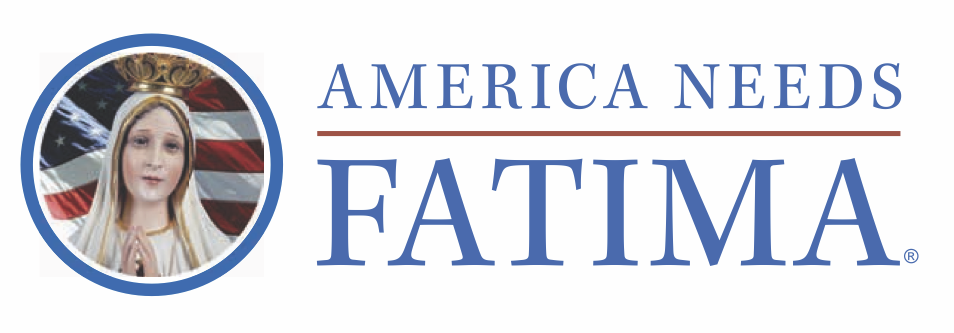
TOPICS:
The Holy Trinity
May 30, 2015 / Written by: Andrea F. Phillips

The doctrine of the Holy Trinity, which states that God is One in three Persons – Father, Son and Holy Ghost – is central to our Catholic faith. This awesome teaching is so far beyond human understanding that it could only be known through revelation.
Yet as lofty and mysterious as it is, the doctrine of the Holy Trinity does not contradict our reason, nor totally elude our grasp. The great St. Patrick, when evangelizing Ireland, made the mystery “palpable” by using the humble shamrock, with its three leaves on the one stem, as an example.
Thus God is a pure, eternal, omnipotent and omnipresent spirit with one nature and one substance, but three distinct persons, the second of which, the Son, became man to redeem mankind from the original stain of Adam and Eve.
Scriptural Examples
Whilst the triune nature of God was known in the Old Testament, the clarity with which the mystery of the Holy Trinity is revealed in the New Testament is truly remarkable.
In St. Luke’s Gospel (1:35), the Archangel Gabriel says to the Virgin Mary:
“The Holy Ghost shall come upon thee, and the power of the most High shall overshadow thee. And therefore also the Holy which shall be born of thee shall be called the Son of God.”
At Jesus’ baptism in the Jordan, it is the Father Himself Who gives witness to the Son:
“And lo, the heavens were opened…And behold a voice from heaven saying: This is my beloved Son, in whom I am well pleased.” Matthew 3:16.
And while Jesus often speaks of His Father to His Apostles, He also distinctly mentions the Spirit to them in such passages as John 15: 26:
“But when the Paraclete comes, whom I will send you from the Father, the Spirit of truth, who proceeds from the Father, he shall give testimony of me.”
Later, as Our Lord commands His disciples to spread the Gospel throughout the world, the triune nature of God shines forth in full splendor in the baptismal formula He entrusts to them:
“Going therefore, teach ye all nations: baptizing them in the name of the Father, and of the Son, and of the Holy Ghost." Matthew 28:19
Notice one name but three persons.
Even Satan, while tempting Him in the desert, endeavored to pry from Jesus His true identity: Was He the Son of God? Matthew 4:3, 6.
The Trinity Attacked, and Defined, through the Centuries

Throughout the history of the Church, the doctrine of the Holy Trinity has been challenged by multiple heresies.
Thus, as early as 259 AD, Pope Saint Dionysius was already defending the Trinitarian doctrine against the heretical errors of Sabellius who held that God had three “faces” or “masks” rather than being three distinct persons within the Godhead.
One of the most extensive declarations of the Church on the Blessed Trinity dates from 675 AD and was issued in Toledo, Spain, at that time in the throes of an Islamic invasion, whose Koranic claim branded Christians as idolaters because they adored Jesus Christ as God.
In 1213, in face of the Albigensian heresy which believed in a good and an evil source to creation, the Fourth Lateran Council defined:
“We firmly believe and profess without qualification that there is only one true God, eternal, immense, unchangeable, incomprehensible, omnipotent, and indescribable, the Father, the Son, and Holy Spirit: three persons but one essence, and a substance or nature that is wholly simple.”
Thus has the Church defended, and defined, the Trinitarian Dogma down through the centuries and into modern times.
Our God, not Distant, but a Friend
And so, through divine revelation and the definitions of the Church’s Magisterium based upon this same Revelation, we can know who our God is: one in substance, three in personhood, eternal, creator of all things visible and invisible, all powerful, everywhere present.

But such an awesome Creator is not distant from His creation. Our God is Love, and Love, by its very nature, is communicative. A marvelous aspect of the doctrine of the Holy Trinity, which has inspired and drawn the saints through the ages, is what is called the “indwelling of the Trinity”.
This doctrine teaches that not only is God present everywhere in a general way, but with those who keep His commandments, and live in His grace, He establishes an intimate relationship.
Our Lord Jesus pointed to this “indwelling” at the Last Supper when He said:
“I shall ask the Father, and he will give you another Paraclete to be with you forever, the Spirit of Truth whom the world can never receive because it neither sees him nor knows him; but you know him, because he is with you, he is in you.”
And just so we don’t think the Spirit alone dwells in us, Jesus clarified:
"If any one loves me, he will keep my word, and my Father will love him, and we shall come to him and make our home with him." John 14:16, 23.
So, not only the Holy Spirit, but the Father and the Son dwell in a soul keeping “His word”.
The indwelling of the Holy Trinity begins at Baptism and continues so long as that soul remains in God’s friendship and grace. Serious sin “expels” this presence, but can be regained with repentance, and a sincere sacramental confession.
Just as with any other relationship, we can grow in friendship with our three divine guests by prayer and the practice of the Christian virtues. The saints took this friendship all the way to deep union, a state that gave them uncommon love, joy, trust and fearlessness in all they did, even the gift of miracles. This divine friendship is offered to each and every one of us.
Indeed, the doctrine of the Most Holy Trinity is central to our faith, and our awesome patrimony.
